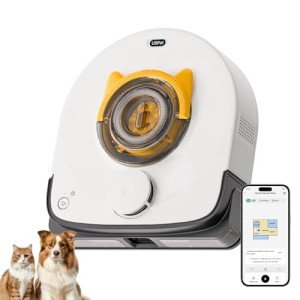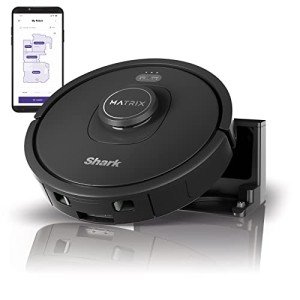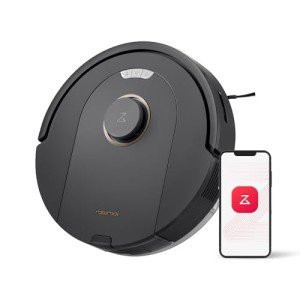In the rapidly evolving world of home technology, the integration of smart features into everyday appliances has become a hallmark of modern convenience. One such innovation that has gained significant traction is the 2-in-1 robot vacuum and mop. These devices combine the functionality of a vacuum cleaner and a mop into a single, intelligent unit, offering homeowners a more efficient and streamlined cleaning experience. This guide delves into the features, benefits, and practical applications of these advanced cleaning robots, providing a comprehensive guide for those considering an upgrade to their home cleaning arsenal.
Introduction to 2-in-1 Robot Vacuum and Mop
A 2-in-1 robot vacuum and mop is a multifunctional cleaning device designed to handle both dry and wet cleaning tasks. These robots are equipped with advanced sensors, mapping technology, and smart connectivity features, allowing them to navigate and clean various surfaces with precision and efficiency. Whether it's picking up dust, hair, and debris or mopping floors to remove stubborn stains, these devices can do it all, making them a valuable addition to any household.
Key Features and Benefits
-
Dual Cleaning Modes
- Vacuum Mode: In this mode, the robot uses its powerful suction to pick up dust, dirt, and debris from carpets, rugs, and hard floors. Advanced filtration systems ensure that allergens and fine particles are captured, promoting a healthier living environment.
- Mop Mode: When switched to mop mode, the robot uses a water tank and microfiber pads to clean and sanitize hard surfaces. The water flow can be adjusted to suit different cleaning needs, from light mopping to deep scrubbing.
-
Smart Navigation and Mapping
- LIDAR and Visual SLAM: These robots use LIDAR (Light Detection and Ranging) and Visual SLAM (Simultaneous Localization and Mapping) technologies to create detailed maps of the home. This allows them to navigate around obstacles, avoid falls, and clean efficiently without human intervention.
- Virtual Boundaries and No-Go Zones: Users can set virtual boundaries and no-go zones using a smartphone app or physical markers. This ensures that the robot cleans only the desired areas and avoids sensitive or restricted spaces.
-
Connectivity and Remote Control
- Smart Home Integration: These devices can be controlled via a smartphone app, voice assistants like Amazon Alexa and Google Assistant, or smart home hubs. This allows users to schedule cleaning tasks, monitor cleaning progress, and receive notifications.
- Real-Time Updates: The app provides real-time updates on the robot's status, including battery life, cleaning progress, and any issues that may arise.
-
Maintenance and Convenience
- Self-Cleaning and Self-Emptying: Some models come with self-cleaning and self-emptying features, reducing the need for manual maintenance. The robot can automatically return to its charging dock to empty its dustbin and recharge when needed.
- Water Tank and Filter Maintenance: Regular maintenance of the water tank and filters is essential for optimal performance. Most models provide reminders for maintenance tasks, ensuring that the robot remains in top condition.
Practical Applications
-
Busy Households
- For families with busy schedules, a 2-in-1 robot vacuum and mop can be a lifesaver. It can handle daily cleaning tasks, ensuring that the home remains clean and tidy without the need for constant manual effort.
-
Pet Owners
- Pet owners often struggle with hair and dander. These robots are particularly effective at picking up pet hair and maintaining a clean living environment, which is especially beneficial for those with allergies.
-
Elderly and Mobility-Impaired Individuals
- For elderly or mobility-impaired individuals, a 2-in-1 robot vacuum and mop can provide a significant level of independence. The ability to control the device remotely and set cleaning schedules ensures that the home remains clean and hygienic.
-
Large or Multi-Level Homes
- These robots are designed to clean large and multi-level homes efficiently. They can navigate stairs (with the help of ramps) and clean multiple floors, making them a versatile solution for larger households.
FAQs
Q: How often should I clean the microfiber pads and filters?
- A: It is recommended to clean the microfiber pads after each use and replace them every 2-3 weeks, depending on the level of dirt and usage. Filters should be cleaned every 2-4 weeks and replaced every 6 months to a year.
Q: Can the robot clean under furniture and in tight spaces?
- A: Yes, most 2-in-1 robot vacuum and mops are designed to navigate under furniture and in tight spaces. Their slim profiles and advanced sensors allow them to clean hard-to-reach areas effectively.
Q: Is it safe for the robot to clean around pets and children?
- A: Yes, these robots are generally safe to use around pets and children. They are equipped with safety features to prevent falls and avoid obstacles. However, it is always a good idea to supervise the first few cleaning sessions to ensure everything runs smoothly.
Q: Can I use the robot on all types of flooring?
- A: Yes, 2-in-1 robot vacuum and mops are designed to work on various flooring types, including carpets, hardwood, tile, and laminate. However, it is important to adjust the water flow and cleaning settings to suit the specific floor type to avoid damage.
Q: How do I set up the robot for the first time?
- A: Setting up a 2-in-1 robot vacuum and mop is straightforward. Most models come with a user manual that provides step-by-step instructions. Generally, you will need to charge the robot, install the microfiber pads, and connect it to your Wi-Fi network using the smartphone app.
The 2-in-1 robot vacuum and mop represents a significant advancement in home cleaning technology. With their dual cleaning modes, smart navigation, and connectivity features, these devices offer a convenient and efficient solution for maintaining a clean and hygienic home. Whether you are a busy professional, a pet owner, or someone with mobility challenges, a 2-in-1 robot vacuum and mop can significantly enhance your quality of life. As technology continues to evolve, these devices are likely to become even more sophisticated, making them an essential part of the modern smart home.






